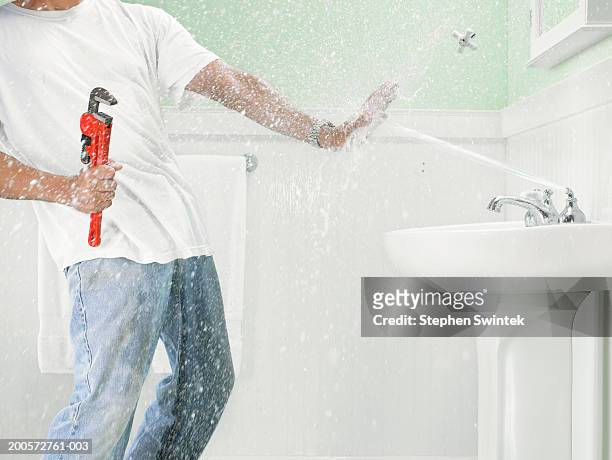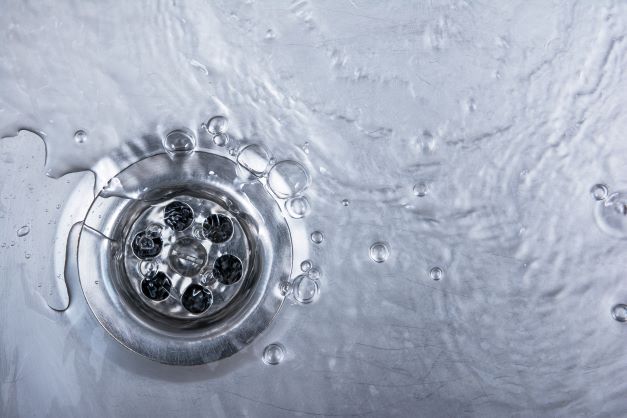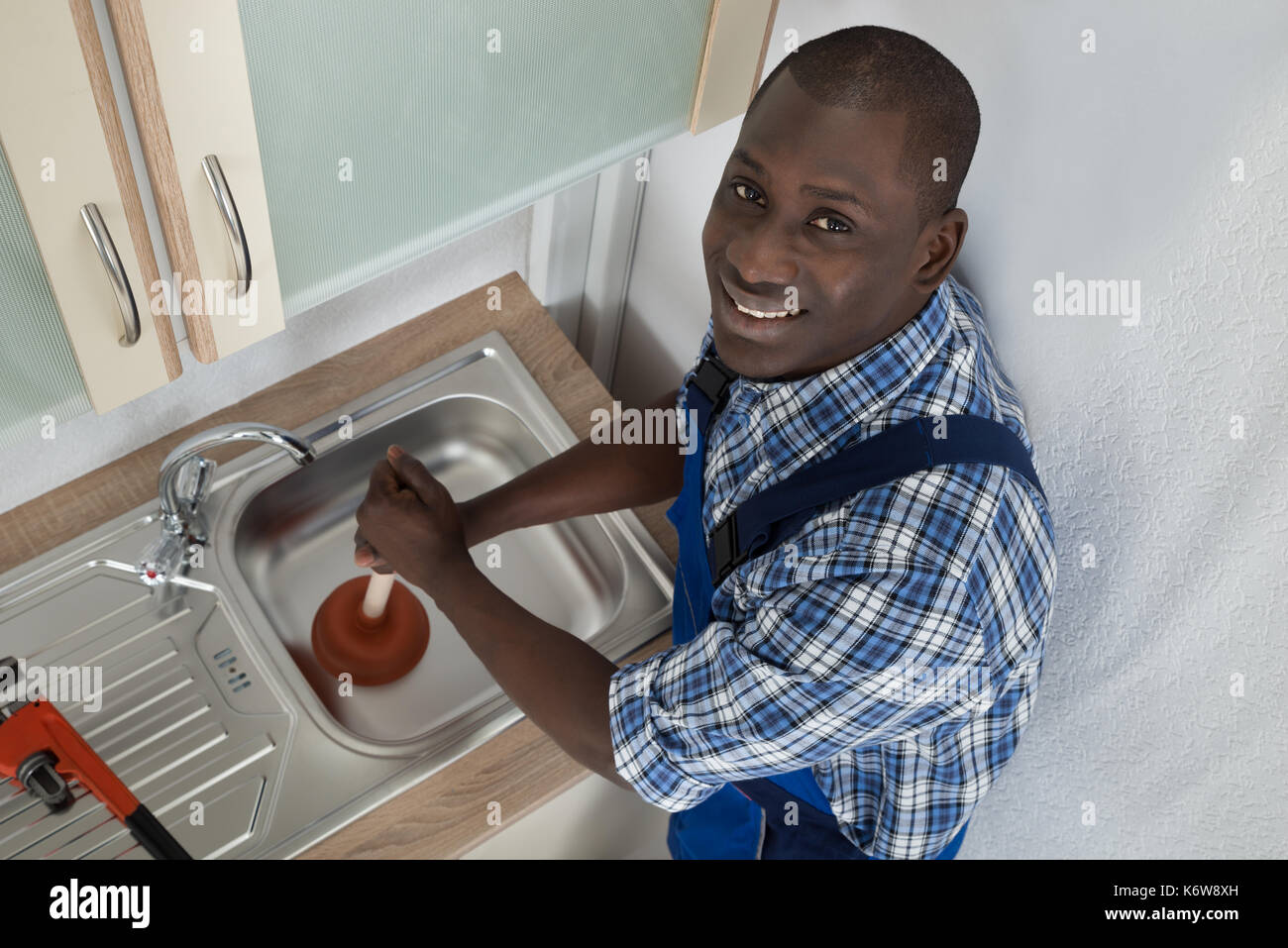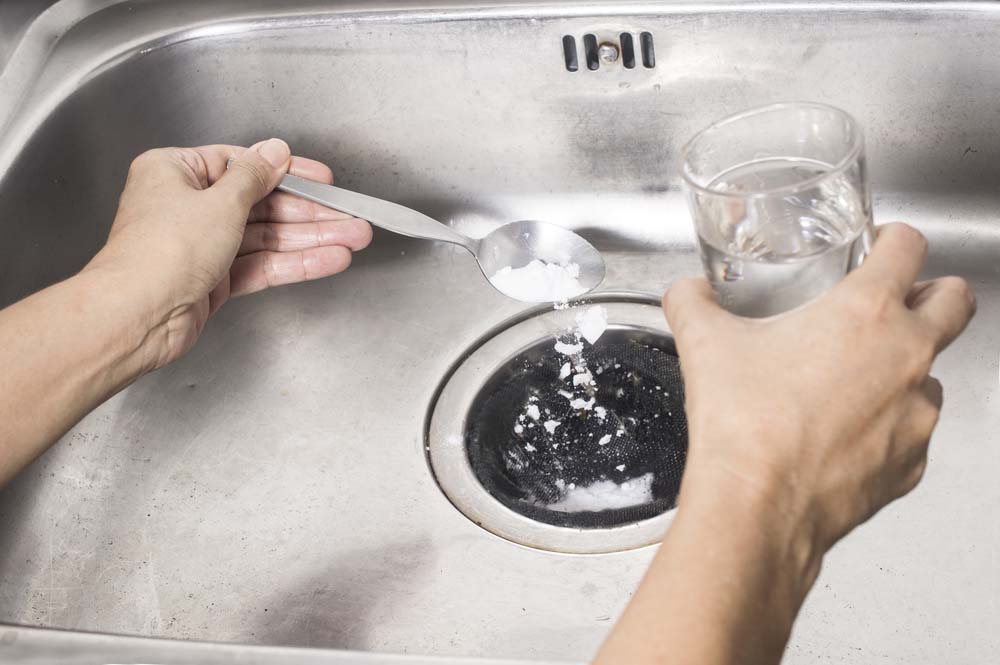If you've ever experienced the frustration of a kitchen sink that won't drain and is instead flooding your countertop and floor, you know how urgent it is to fix the problem. Not only is it a major inconvenience, but it can also cause water damage and mold if left untreated. Here are some steps you can take to fix a kitchen sink that is flooding.How to Fix a Kitchen Sink That is Flooding
The first thing to do when your kitchen sink is flooding is to turn off the water supply. This can usually be done by turning the shut-off valve located under the sink. If you cannot locate the shut-off valve, you can also turn off the main water supply to your house. This will prevent any further flooding and give you time to assess the situation.What to Do When Your Kitchen Sink is Flooding
There are several potential causes of a kitchen sink flooding. The most common is a clog in the drain. This can happen from food scraps, grease, or other debris building up over time. Another cause could be a broken or damaged pipe, which can be more difficult to fix on your own. In some cases, the problem may be with the plumbing system itself.Causes of a Flooding Kitchen Sink
The best way to deal with a flooding kitchen sink is to prevent it from happening in the first place. Regularly cleaning your sink and avoiding putting large food scraps or grease down the drain can help prevent clogs. You can also invest in a sink strainer to catch any debris before it goes down the drain.Preventing a Kitchen Sink from Flooding
There are some tell-tale signs that your kitchen sink may be clogged and at risk of flooding. These include slow draining water, gurgling noises coming from the drain, and water rising in the sink when you use other plumbing fixtures in your house. If you notice any of these signs, it's best to address the issue before it turns into a full-blown flood.Signs of a Clogged Kitchen Sink
If the cause of your flooding kitchen sink is a clog, you can try using a plunger to clear it. Make sure to cover the overflow opening with a rag or tape before plunging to create a stronger suction. Then, plunge the drain vigorously for a minute or two. If the water begins to drain, you have successfully cleared the clog.Using a Plunger to Unclog a Kitchen Sink
If the plunger doesn't work, you can try using a mixture of baking soda and vinegar to clear the clog. First, pour half a cup of baking soda down the drain, followed by half a cup of vinegar. Let the mixture sit for about 15 minutes, then pour boiling water down the drain to flush it out. This method can be effective for minor clogs.Clearing a Kitchen Sink Drain with Baking Soda and Vinegar
If the above methods don't work, or if you suspect a more serious issue with your plumbing, it's best to call a professional plumber. They have the tools and expertise to diagnose and fix the problem quickly and effectively. This can save you time and prevent further damage to your kitchen and home.When to Call a Professional for a Flooding Kitchen Sink
Regular maintenance of your kitchen sink can help prevent it from flooding in the future. This includes keeping it clean and free of debris, as well as checking for any leaks or damage. You should also avoid pouring grease or oil down the drain, as it can solidify and cause clogs.How to Maintain Your Kitchen Sink to Prevent Flooding
There are a few common causes of kitchen sink flooding that you can avoid with proper care and maintenance. These include putting large food scraps or grease down the drain, not cleaning the sink regularly, and letting leaks or damage go unrepaired. By being mindful of these potential causes, you can keep your kitchen sink from flooding and save yourself from a major headache. In conclusion, a flooding kitchen sink can be a major inconvenience and cause damage to your home if not addressed promptly. By following these tips and being proactive in maintaining your sink, you can prevent this issue and keep your kitchen running smoothly. And if all else fails, don't hesitate to call a professional for help.Common Causes of Kitchen Sink Flooding and How to Avoid Them
The Importance of Proper Drainage in House Design

Preventing Kitchen Sink Flooding
 When designing a home, there are many factors to consider such as the layout, aesthetics, and functionality. However, one crucial aspect that is often overlooked is the importance of proper drainage. Without proper drainage, a home can face numerous issues, one of which is a flooded kitchen sink.
Kitchen sink flooding
is not only a major inconvenience, but it can also lead to costly repairs and damage to your home. The kitchen sink is one of the most used areas in a house, and it is crucial to ensure that it is properly designed to prevent any flooding.
Proper drainage
starts with the design of the
kitchen sink
itself. It is essential to have a
well-designed sink
that allows water to flow freely and efficiently. This means avoiding sinks with flat surfaces that can easily accumulate water and lead to clogs.
Additionally, it is crucial to have a
properly sized drain
for your kitchen sink. A drain that is too small or too large can cause water to either back up or drain too quickly, resulting in potential flooding.
Clogged drains
are also a common cause of kitchen sink flooding, so it is important to have a
strainer
in place to catch any food particles and prevent them from clogging the drain.
Aside from the sink itself,
proper plumbing
is essential in preventing kitchen sink flooding. This includes the correct placement and installation of
drain pipes
and
vent pipes
, which allow for proper water flow and prevent air pressure build-up that can lead to clogs.
Furthermore,
proper maintenance
is crucial in preventing kitchen sink flooding. Regularly cleaning out the
drain pipes
and using natural
drain cleaners
can help prevent clogs from occurring. It is also important to check for any leaks or cracks in the
pipes
and have them repaired immediately to prevent any potential flooding.
In conclusion,
proper drainage
is a crucial aspect of house design that should not be overlooked. Ensuring a
well-designed sink
,
properly sized drains
,
correct plumbing
, and
regular maintenance
can prevent kitchen sink flooding and save you from the hassle and cost of repairs. So, when designing your dream home, make sure to give proper drainage the attention it deserves.
When designing a home, there are many factors to consider such as the layout, aesthetics, and functionality. However, one crucial aspect that is often overlooked is the importance of proper drainage. Without proper drainage, a home can face numerous issues, one of which is a flooded kitchen sink.
Kitchen sink flooding
is not only a major inconvenience, but it can also lead to costly repairs and damage to your home. The kitchen sink is one of the most used areas in a house, and it is crucial to ensure that it is properly designed to prevent any flooding.
Proper drainage
starts with the design of the
kitchen sink
itself. It is essential to have a
well-designed sink
that allows water to flow freely and efficiently. This means avoiding sinks with flat surfaces that can easily accumulate water and lead to clogs.
Additionally, it is crucial to have a
properly sized drain
for your kitchen sink. A drain that is too small or too large can cause water to either back up or drain too quickly, resulting in potential flooding.
Clogged drains
are also a common cause of kitchen sink flooding, so it is important to have a
strainer
in place to catch any food particles and prevent them from clogging the drain.
Aside from the sink itself,
proper plumbing
is essential in preventing kitchen sink flooding. This includes the correct placement and installation of
drain pipes
and
vent pipes
, which allow for proper water flow and prevent air pressure build-up that can lead to clogs.
Furthermore,
proper maintenance
is crucial in preventing kitchen sink flooding. Regularly cleaning out the
drain pipes
and using natural
drain cleaners
can help prevent clogs from occurring. It is also important to check for any leaks or cracks in the
pipes
and have them repaired immediately to prevent any potential flooding.
In conclusion,
proper drainage
is a crucial aspect of house design that should not be overlooked. Ensuring a
well-designed sink
,
properly sized drains
,
correct plumbing
, and
regular maintenance
can prevent kitchen sink flooding and save you from the hassle and cost of repairs. So, when designing your dream home, make sure to give proper drainage the attention it deserves.













































/plumber-unclogging-kitchen-sink-169270382-5797a9355f9b58461f27f024.jpg)

/woman-wearing-yellow-washing-up-gloves-to-unblock-sink-using-plunger-close-up-131987463-5887cfc03df78c2ccd92ec9e.jpg)









:max_bytes(150000):strip_icc()/freshen-and-unclog-drain-with-baking-soda-1900466-22-bbf940b70afa4d5abef0c54da23b1d3f.jpg)
:max_bytes(150000):strip_icc()/freshen-and-unclog-drain-with-baking-soda-1900466-17-20179d73b7a2455797ebc6a5f5bf7479.jpg)
:max_bytes(150000):strip_icc()/freshen-and-unclog-drain-with-baking-soda-1900466-18-1a5b5da01939471ca8f8823865bd1ce8.jpg)

:max_bytes(150000):strip_icc()/freshen-and-unclog-drain-with-baking-soda-1900466-15-166f69a0d4ee4cad85a0f221bf3fdcd0.jpg)

























